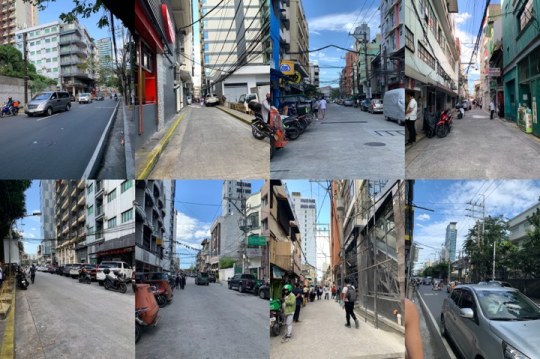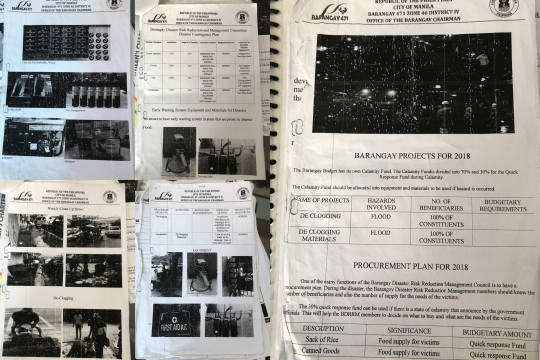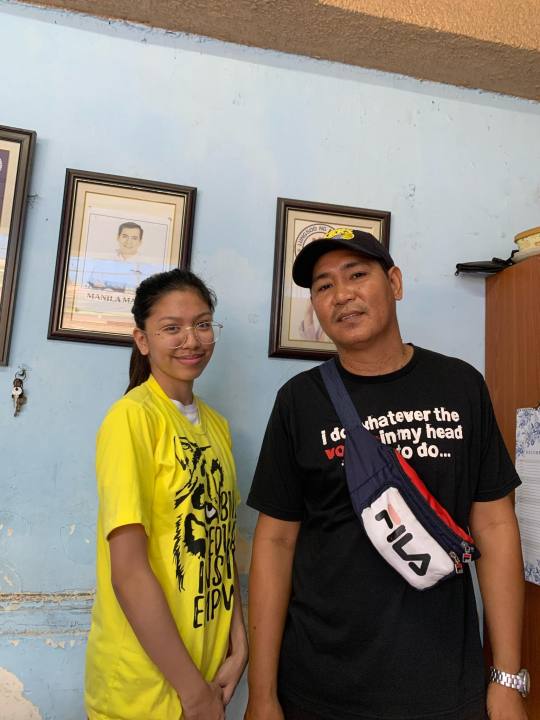Text
Disaster Risk Reduction and Management

Barangay 471 is one of the one hundred and ninety-two (192) barangays situated in the district of Sampaloc in the City of Manila. The barangay population is composed of 1872 residents, wherein 840 are male and 1032 are female, and from there, 56 are senior citizens Also, the barangay is situated near the University of Santo Tomas and other neighboring schools, and thus, is considered as a transient area for many students.
Upon interviewing Mr. Roberto S. Cruz, the Executive Officer of the barangay, I have learned a lot about the situation of the community especially in times of disasters and calamities and since I’m not from here, he insisted on sharing with me some of their many hazardous experiences.
As per the statement of the Executive Officer, Barangay 471 is a very much vulnerable community just like any barangays in Sampaloc, Manila. This is certainly because Metro Manila is “topographically composed of coastal lowlands and alluvial lowlands”, and thus, this area is very prone to natural disaster and the vulnerability of the residents is very high. Some of the disasters that they continue to experience are flood and earthquake.
For the past years, these disasters have made a huge impact to the way of living of almost everyone in the community, especially the vulnerable ones, including the poor, senior citizens, students and kids. It has cost them huge damages and losses, wherein an average of their GDP was lost because of the previous typhoons (Ondoy, Pedring, Quiel, Sendong, etc.) that drowned Metro Manila.
“With combined heavy rains and strong winds, Ondoy affected 993,227 families or 4,901,234 people, making it fourth in the list of worst natural disasters in the Philippines in terms of number of people affected.” (Olan,2014)
“Twenty-three provinces and Metro Manila were placed under a state of calamity due to the widespread devastation by Ondoy.” (Olan,2014)
“In Metro Manila, the most affected areas in terms of flooding were Pasig City, Quezon City, City of Manila, Caloocan City, Muntinlupa City, and Marikina City, with the highest height of flood ranging from knee to neck level, up to roof top.” (Olan,2014)
With this, it is very evident how disasters can disrupt the functioning of not just the communities, but rather, the whole society that we belong to.
However, with these experiences and damages, the government was very eager to reduce the risk that may arise from possible disasters in the future.
“The damages brought by both Ondoy and Pepeng led to the enactment of Republic Act No. 10121 or the Philippine Disaster Risk Reduction and Management Act of 2010. The Act enhances the disaster preparedness and capabilities of the national government and local government units by providing a National Disaster Risk Reduction Management System Framework, and by institutionalizing the National Disaster Risk Reduction and Management Plan.” (Olan,2014)
To ensure that every community is prepared and ready for any disaster that may occur any time, every barangay was given the task to conduct various assessments and programs that will help each and everyone in the community. Given the right capacities and strengths, Barangay 471 was able to conduct Metro Manila Shake Drill 2019 – to train the community and to test various elements of their response plan in order to evaluate it, and De-clogging – to reduce the possible flooding in low-lying areas in the barangay. These assessments were conducted in hopes that they will be able to withstand disasters like earthquake and flood from typhoons.

As per the result of the assessments, the barangay is a safe place for the people in the community. The barangay can accommodate people who will be affected by any disaster. The barangay engages in seminars and activities led by the government officials in the city. The barangay is ready to assist in times of disasters or calamities.

Although the community is very much ready, there is no guarantee that damages and losses will be entirely erased. This is due to the fact that not everyone in the community participates and engages in the said activities and programs, and thus, is not entirely ready for any disaster that may occur any time. Most people in this area lack the resources that they may need in order to withstand and be prepared for possible disasters.
“Among the 4,368 Filipino households surveyed across the country, 74 percent were unable to invest in disaster preparedness, mostly due to lack of funds (47.5 percent) and lack of time (20 percent).” (Cuizon, 2019)
Moreover, the lack of preparedness for disasters is not only the issue, but as well as the damage, recovery, and assistance after the disasters. Filipinos are very much known for being resilient, for always being able to bounce back after any circumstances. However, just like any normal being, most Filipinos are still not able to or experience having a hard time coping up with the aftermath of any disaster. Huge damages and losses is what they endure after every disaster or calamity that they face. Knowing how a huge number of Filipinos are susceptible to disasters, it is no wonder that even after being able to prepare, they still suffer. And worst case scenario, not everyone is g8ven the right assistance by the government. And this is known to every Filipino all around the country.
“Unsurprisingly, the study shows a large portion of the population (42 percent) had experienced significant damage to property, assets and had been displaced from their homes due to a disaster.” (Cuizon, 2019)
“The study also revealed Filipinos’ perceptions on ability to cope and recover was limited. Thirty-eight percent felt they would have difficulty recovering from a disaster in the near future, and only 22 percent were confident they would be able to recover.” (Cuizon, 2019)
With this, I think that the government should not just focus on conducting programs and activities that will ensure the readiness and preparedness of everyone at times of disasters and calamities, but rather, they should also focus on being able to serve their people even after disasters have occurred. It is very important that everyone is being given equal support and assistance by the government. This is because, nowadays, not everyone is part of the agenda for development. There are voices out there that are not heard and need echoing.
Furthermore, this experience has opened up my mind about the real deal when it comes to our country’s situation at times of disaster. I realized how a lot of people may suffer and be at risk if we are not going to take this seriously, if we are going to let hazards turn into disasters. I realized how there are some people out there having there lives at high risk because of their social status, age, gender, etc. However, if we, Filipinos, will step up our game and at least do something to reduce the possible risks that may occur in the future, we could all lessen the damage and losses that it may bring to us. Thus, we should all be aware of how crucial disaster risk reduction management is, and how crucial it is to engage everyone in this kind of activities. Disaster is inevitable and is a threat to our well-being, but with enough capacity and strength, we can lessen its impact in our lives and eventually, our society.
With this perspective, it is safe to say that these issues should be given enough attention by every Filipino. We should all raise awareness on this matter. As a Filipino youth, I can use my voice to echo the voices of those unheard by the one who is in charge of the society. I can use the social media to my advantage to spread knowledge regarding this matter and encourage them to engage in disaster management programs. As a youth, with not much power in the society, I can join organizations who share the same aim with me in order for me to turn my visions into reality and be a volunteer. Lastly, I can use my voice in order to encourage my fellow youth to do the same and take part on performing concrete actions that may help the community. I believe that through these actions, I can possibly help people especially, the vulnerable one to somehow reduce their risk and be able to increase their capacity to cope up with any disaster. There’s nothing much I can do, but, I hope that with these actions, I can address the issue and somewhat help my community in order to help the bigger community around me.

REFERENCES
Olan, S. J. (2014). Looking Back: The Records of Ondoy. https://www.rappler.com/move-ph/issues/disasters/70240-ondoy-records
Cuizon, A. (2019). Study: Most Filipinos Not Fully Ready for Disasters. https://www.sunstar.com.ph/article/1786236
2 notes
·
View notes